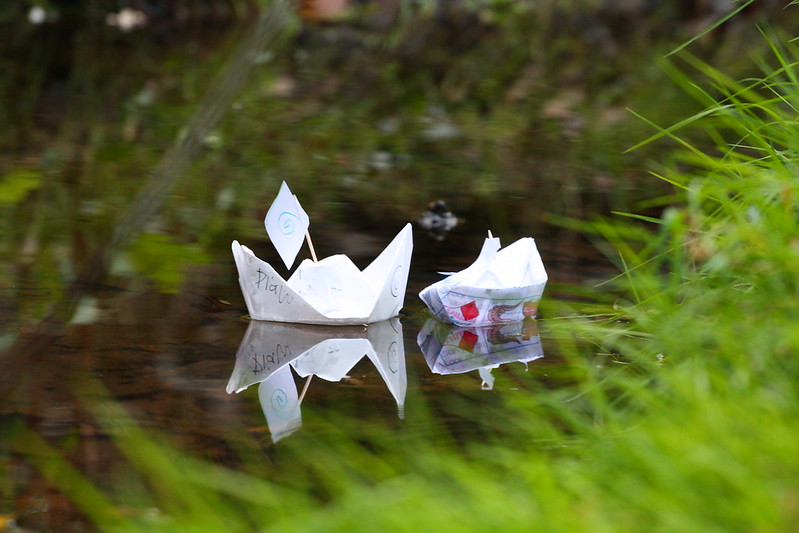Encourage Creativity
Have you ever tossed small rocks into a pond, played with toys in a bathtub or a sink, or watched boats float by on the water? Why do some things float and others sink? Being curious about this and other things in the world around you has been linked to better brain health and positive relationships.
Let’s put that curiosity to work to explore which materials float best!
Design a Floating Device

Image Credit: John Morgan “Sailing” via Flickr (CC BY 2.0)
Steps:
- Gather some recycled and other materials that you have in your home. For example:
- aluminum foil
- craft/popsicle sticks
- styrofoam (trays, cups, or plates, and/or egg cartons)
- plastic containers (recycled)
- cardboard (recycled boxes or scraps, paper towel and toilet paper rolls)
- different kinds of paper (recycled where possible)
- straws
- tape
- scissors
- coins, small stones, or other ‘weights’ to test your floating device
- Use your materials to build something that you think will float.
- Which materials do you think will stay afloat?
- What shape do you think might float best?
- Test your floating device!
- Find a place to test your floating device. A sink or a large bowl or container partially filled with water would work.
- Place your floating device in the water. Does it float or sink? Why do you think that is?
- Try adding some coins, small stones, or other weights to see if your floating device will still float. How many coins or stones will it hold?
- Think about how you might improve your floating device to hold more weight or to float for a longer time. Challenge a friend by phone, text, or video chat to build their own device and see whose device can hold more weight.
Have fun and stay curious!
Categories: Elementary

